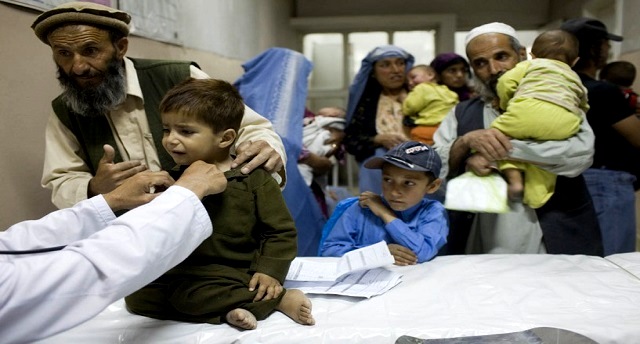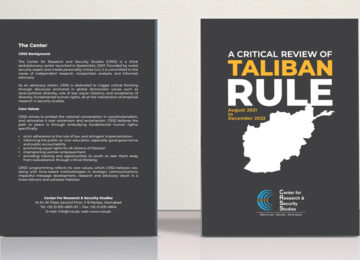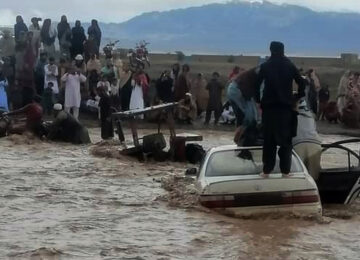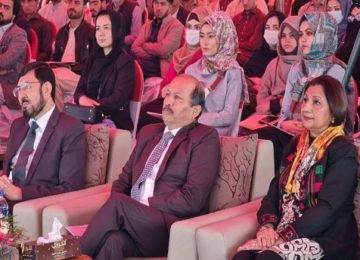After fighting broke out in the rural district of Chark-Logar, Salim and his family were forced to flee their home. During the firefight, his brother was killed and Salim was shot in the stomach. It took Salim two hours until he reached a first aid post. In the process, he became separated from his wife and children. Two days later he was transferred to a hospital run by Emergency, an Italian NGO specialized in trauma care.
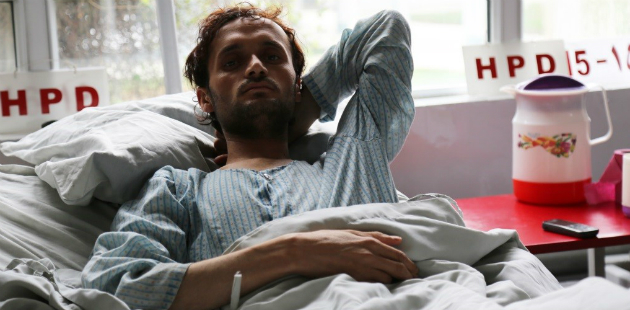
Salim’s story is not unusual in today’s Afghanistan, which is in the midst of one of the longest protracted complex emergencies in the world. It faces prolonged conflict, frequent natural disasters and mass population movements. The situation is made even more complicated with masses of internally displaced people, returnees, and refugees congregating in both urban centres and their outskirts. The already overwhelmed health facilities are often unable to absorb the additional burden of the new arrivals.
The Ministry of Health, with support from the Health Cluster, led by WHO, is struggling to rebuild a health system badly frayed after years of conflict. The challenges are many: damaged infrastructure, a lack of trained healthcare providers, and under-resourced healthcare facilities. The situation is further complicated by a lack of security and pervasive poverty.
More than three fourths of the population now has access to primary healthcare services but important gaps remain. Trauma care and trauma-related disability is one of the most critical issues facing Afghanistan, and the already overstretched public health system cannot tackle the problem alone.
Much of the trauma care in the country’s capital city, Kabul, is provided by the Italian NGO Emergency, which provides specialized trauma care that is unavailable in standard government facilities. Emergency has worked in the country for nearly two decades and has treated over five million patients, and its work has been recognized by the Ministry of Health. Emergency’s Surgical Centre for War Victims in Kabul treats both the local population and welcomes incoming patients from remote areas. Its services are free of charge.
In 2017, at the request of WHO and in collaboration with the district and provincial Health Directorates, Emergency trained 497 doctors and nurses from the provinces in pre-hospital trauma and mass casualty management. Emergency, which is a member of the Health Cluster, funds its international staff and operations through private donations, with additional funding from WHO, the Common Humanitarian Fund, and the European Commission.
In the long-term, quality healthcare for all Afghan citizens will only be met by a combination of specific goal-oriented projects, foreign aid, domestic responsibility, and time, said Dr David Lai, Afghanistan Health Cluster Coordinator. The work being done by Emergency is an example of how the country needs to utilize diverse resources to rebuild its health sector, he said.
“The Health Cluster‘s mission is to support the Ministry of Public Health to provide leadership to humanitarian health response in order to prevent and reduce crisis-related illness and death. Providing healthcare for those displaced by war means healthier lives for millions, turning despair into hope,” said Dr Lai.
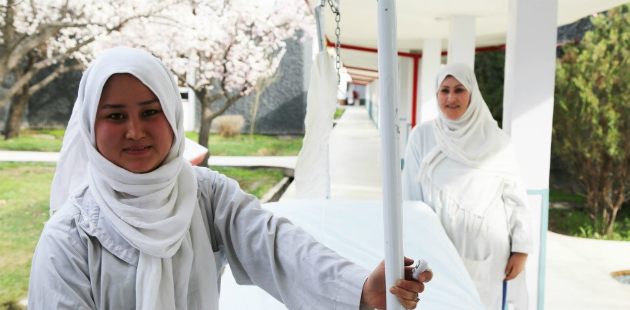
More information on the Basic Package of Health Services in Afghanistan
In 2001, Afghanistan’s Ministry of Public Health inherited a devastated health system and some of the worst health statistics in the world. The maternal mortality ratio, estimated at 1600 per 100,000 live births, was the highest ever recorded (Bartlett et al., 2005). The infant and child mortality rates, 165 and 257 per 1000 live births, respectively, both ranked as the fourth highest in the world in 2002. And access to health services, defined as living within one hour walking of a health facility, in 2001 was limited to less than 10% of the population (Ministry of Public Health, 2008). The health system was rebuilt based on the Basic Package of Health Services (BPHS).
WHO led the initial drafting of an essential package of health interventions with input from the Ministry of Public Health (MOPH) and in consultation with NGOs that were Health Cluster partners. The collaboration led to the development of a framework to guide its decisions about health services and facilities, policies and offers of assistance so that it could plan how to use its resources and those of donors to benefit the most people and be sustainable: the Public-Health Decision Tool.
The Public-Health Decision Tool helped the Ministry of Public Health achieve four key goals: (1) assisting policy-makers to select health priorities, (2) establishing criteria for making choices about interventions, (3) ensuring that the choices about health services to be delivered were consistent with national health objectives and (4) maintaining MOPH priorities over time (Ministry of Health, 2003; Ministry of Public Health, 2005a).
Since the creation of the BPHS in 2003, the MOPH has seen many positive changes in the health system. Most notable has been the expansion of access to BPHS services to 77% of the population.
The BPHS is the foundation of the Afghan health system and has been the key instrument in its development. The BPHS clearly delineates the services that should be provided by each type of primary healthcare facility in the Afghan health system—health posts, basic health centers, comprehensive health centers and district hospitals—and specifies the staff, equipment, diagnostic services, and medications required to provide those services. In essence, the BPHS is the basis for the primary health care system of our country and establishes its standards.
This article appeared on www.who.int in April 2018. Original link.
Disclaimer: Views expressed on this blog are not necessarily endorsed or supported by the Center for Research and Security Studies, Islamabad.



